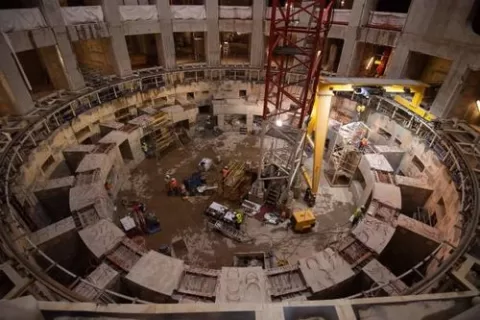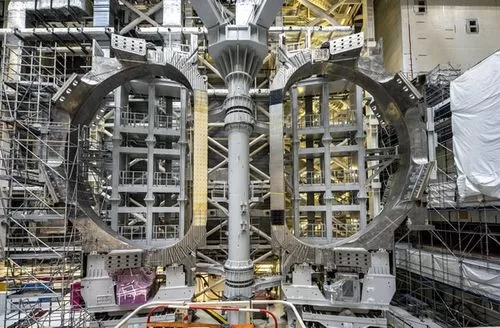ITER also known as International Thermonuclear Experimental Reactor is a significant project to show that nuclear fusion is a viable, renewable resourceful and, practically inexhaustible source of energy. ITER is the the World’s Largest Fusion Reactor based in St Paul lez Durance, in the south of France; it unites 35 countries, including the United States, China, India, Japan, Russia, Korea and the EU in a bid to harness the potential of fusion power to meet the world’s future energy needs.
Fusion is the same process which occurs in the Sun and stars. It happens when two light atomic nuclei get fused together, generally isotopes of hydrogen, namely deuterium and tritium, to form a heavier nucleus and the process results in the production of huge energies. Fusion is fundamentally different from fission, which is used to power current nuclear plants and results in long-lived radioactive waste production.
Read also Top 4 Largest Battery Energy Storage Systems under construction in Europe

At the core of the ITER is the tokamak a round chamber with a hole in the middle where the fusion process should take place. In the tokamak chamber hydrogen will be converted to a plasma at a temperature up to 150 million Celsius which is required to initiate fusion reactions. Super conducting coils will then contain and shape this plasma to avoid it coming into contact with the walls of the reactor. The fusion reaction itself is predicted to release substantially more energy than is used to maintain it and, thus, might offer evidence that fusion is commercially viable.
Scope of the project
The primary mission of ITER is to achieve breakeven point, defined as a power gain or Q of at least 10: The fusion stripe is intended to produce ten times as much energy as the amount required to heat the plasma. Earlier machines like the Joint European Torus (JET) in the UK to produce a Q value of 0.67, but ITER is going to be a huge step in terms of fusion efficiency. When in operation, ITER is expected to deliver 500 MW of fusion power from 50 MW of inputs.
Construction on the project started in 2007 and is still ongoing, with the first phase operations expected to commence in the 2030s. ITER is a step towards establishing the commercial fusion power plants which can pave way for a new era of electricity generation that is unlimited and almost carbon-free. It is not only planned to demonstrate that fusion is technically possible but also to experiment with fundamental elements necessary for advanced reactors including tritium which is necessary for sustainable fuel production.
As the global society becomes more sensitive to the negative effects of burning fossil fuels, ITER inspires visions for the future where the power will be clean and renewable. Nuclear fusion is not an easy feat, but the potential benefits of the project are massive, making it one of the most compelling projects in energy generation in the human history. ITER if accomplished may be the first step to establishing fusion reactors that will offer mankind a safe and a constant source of energy for many generations.
Project factsheet
Constructor: ITER construction is undertaken by seven members of the ITER agreement (European Union, China, India, Japan, South Korea, Russia, United States); the European companies have been assigned the task of construction work heads and infrastructures and civil mechanical works.
Start date: 2007:
Completion date: First phase is planned for December 2025, and the full fusion operations (Deuterium Tritium) are expected to begin sometime in the mid 2030s.
Construction cost: €20 billion.
Location: Saint-Paul-lès-Durance, in the Provence-Alpes-Côte d’Azur region of southern France.
Read also Europe’s longest hotel, The Mercure Szczyrk resort, opens its doors

